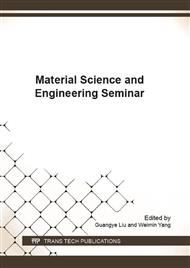p.38
p.47
p.52
p.57
p.62
p.68
p.73
p.79
p.86
Thermal Performance of a Shape-Stabilized Phase Change Material Floor with Different Heating Positions
Abstract:
An effective method to reduce energy consumption for heating a building is by incorporating shape–stabilized phase change material (SSPCM) in building floors. In this study, a new type of SSPCM with increased thermal conductivity is formulated through a self–established experimental device. A model to analyze the thermal performance of the SSPCM floor is developed. The model is used to analyze the thermal performance of the SSPCM floor with two heating positions, one at the bottom and the other in the middle of the SSPCM. Results show that when the heating position is in the middle of the SSPCM, the melting speed is faster and the melting degree of SSPCM is larger than when it is at the bottom.
Info:
Periodical:
Pages:
62-67
Citation:
Online since:
November 2016
Authors:
Price:
Сopyright:
© 2017 Trans Tech Publications Ltd. All Rights Reserved
Share:
Citation:


